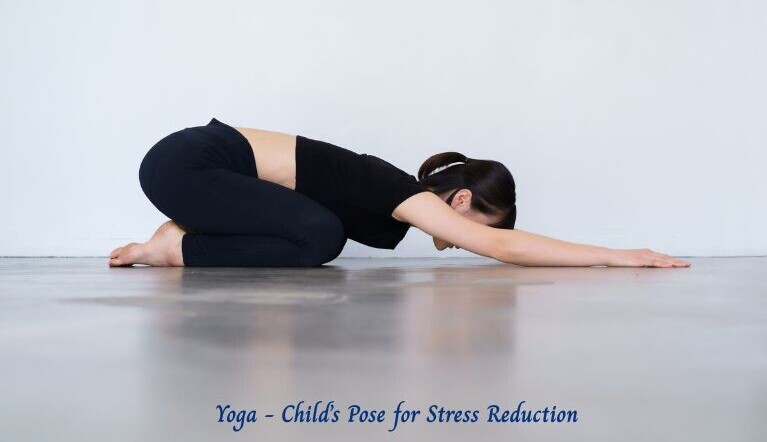Feeling overwhelmed or anxious is a normal part of life, but chronic stress can take a toll on your mind and body. The good news? Regular exercise is one of the most effective ways to manage stress naturally. In this guide, we’ll explore how to reduce stress with exercise, why it works, and the best workouts to calm your mind and boost your mood.
Why Exercise is a Powerful Stress Reliever
When you exercise, your body releases endorphins — natural chemicals that improve your mood and help you feel more relaxed. It also lowers stress hormones like cortisol and adrenaline, which can build up when you’re feeling tense.
Benefits of Exercise for Stress Relief:
- Improves mood by releasing feel-good endorphins.
- Reduces tension in your muscles and promotes relaxation.
- Boosts sleep quality, which helps you cope with daily stress.
- Improves focus and mental clarity to better handle challenges.
- Supports long-term health by lowering blood pressure and improving heart health.
Best Types of Exercise to Reduce Stress
Not all workouts are equally effective for stress relief. Some are better for calming your mind, while others release pent-up energy. Here are a few of the best options:
1. Brisk Walking
Walking is one of the simplest ways to clear your head and reduce anxiety.
- Easy on the joints and accessible anywhere.
- Helps lower cortisol levels.
- A brisk 20–30-minute walk can quickly improve your mood.
Tip: Try walking outdoors in nature for added stress relief.
2. Yoga or Stretching
Yoga combines gentle movement, deep breathing, and mindfulness — perfect for calming both body and mind.
- Reduces muscle tension caused by stress.
- Improves flexibility and balance.
- Helps you focus on the present moment.

Beginner Pose to Try: Child’s Pose – kneel on the floor, stretch your arms forward, and rest your forehead on the mat.
3. Cardio Workouts
Aerobic exercises like cycling, dancing, or swimming increase blood flow and release endorphins.
- Great for burning off built-up stress energy.
- Can improve overall cardiovascular health.
- Even 15 minutes can boost your mood.
Moderate Options: Cycling on a stationary bike, light jogging, or a fun dance workout at home.
Related Post: How to Choose a Stationary Exercise Bike
4. Strength Training
Lifting weights or using resistance bands isn’t just for building muscle — it’s also fantastic for mental health.
- Improves confidence and resilience.
- Helps you channel stress into something productive.
- Builds long-term strength to protect your body from injury.
Simple Start: Try squats, push-ups, or bicep curls with light weights.
5. Rebounding (Mini Trampoline Workout)
Bouncing on a mini trampoline is a low-impact, stress-busting workout that’s fun and easy on the joints.
- Boosts lymphatic circulation, helping to detox the body.
- Releases endorphins for a quick mood lift.
- Only 10–15 minutes a day can make a big difference.
Related Post: Exercise 10 Minutes a Day and Get Incredible Results!
Tips for Sticking with Your Stress-Relief Workout Routine
Consistency is key when using exercise to manage stress. Here are some practical tips to help you stay on track:
Start Small
- Begin with 10–15 minutes a day and gradually increase your time.
- Begin with light weights and gradually increase their weight.
- Even short sessions can make a noticeable difference.
Make It Enjoyable
- Choose activities you look forward to doing.
- Play your favorite music or listen to a podcast while you work out.
Schedule Your Workouts
- Treat exercise like an important appointment.
- Aim for at least 3–5 sessions per week.
Focus on Breathing
- Deep, slow breathing during exercise helps calm your nervous system.
When to Exercise for Stress Relief
Timing matters when it comes to exercise and stress:
- Morning Workouts: Set a positive tone for the day.
- Lunchtime Workouts: Break up your workday and clear your mind.
- Evening Workouts: Wind down after a long day, but avoid intense sessions right before bed.
How to Reduce Stress with Exercise
Learning how to reduce stress with exercise is one of the best gifts you can give yourself. Whether it’s a brisk walk, yoga, strength training, or rebounding, regular movement can calm your mind, lower stress hormones, and improve your overall health.
Start small, stay consistent, and find activities you enjoy. Before you know it, you’ll feel more balanced, energized, and ready to take on life’s challenges — with far less stress weighing you down.
Disclaimer: If you have any concerns or questions about your health, you should always consult with a physician or other healthcare professional. No content on this site should be substituted for direct medical advice from your doctor or other qualified healthcare practitioner. The information contained here is for informational purposes only. It is from my research and personal experience.
Related Posts
Find the Workout You’ll Stick With
What Should You Look for When Buying a Rebounder?
Busy Moms’ Home Fitness Challenge
How To Make Health and Fitness A Lifestyle

